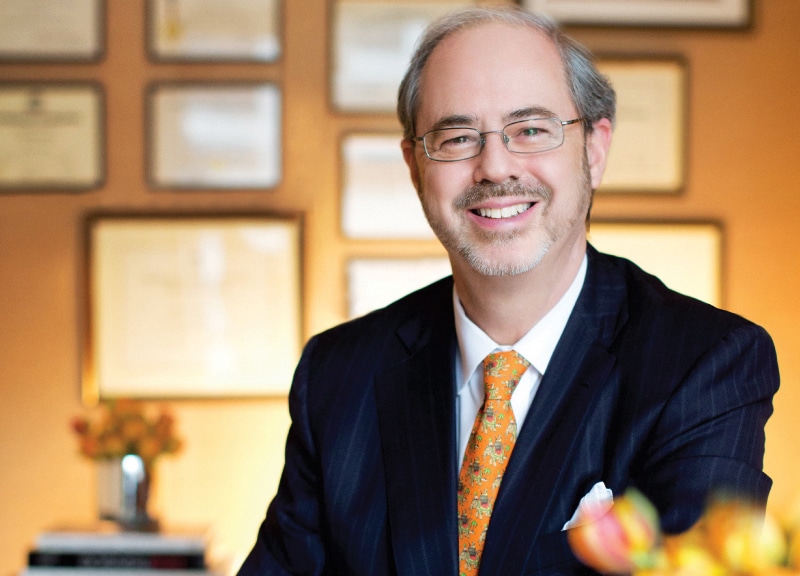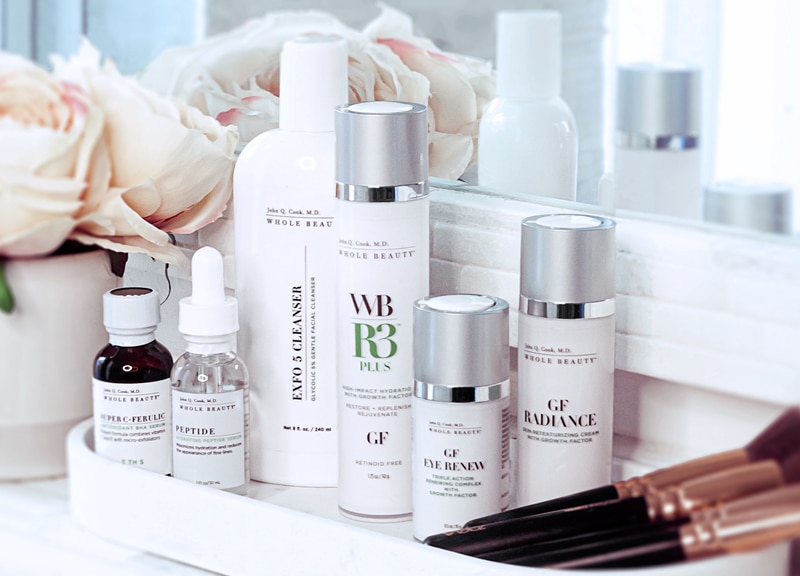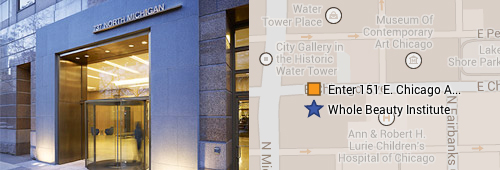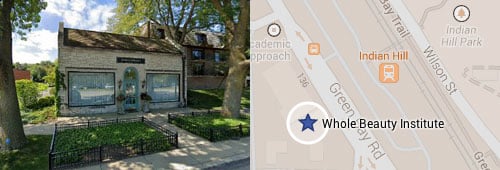Why Dr. John Q. Cook Is the Right Facial Plastic Surgeon for You
Dr. Cook has over 25 years of experience conducting eyelid surgery, and many of those surgeries have been successfully completed under local anesthesia.
Dr. Cook always considers the areas that frame the eyelids in his evaluation. He looks at the position and activity of the brows, the volume and tone of the cheeks, and the quality of the skin. This comprehensive evaluation is key to avoiding a sunken, hollow appearance that may occur after upper and lower blepharoplasty.
Dr. Cook provides a detailed analysis for patients considering eyelid surgery. He considers the fundamental proportions of the face, the degree of structural support of the eyelid, the tone of the eyelid, the fat volumes of the eyelid, and the resilience of the supporting muscle.
When appropriate, Dr. Cook utilizes advanced technologies as part of eyelid rejuvenation, including laser and radiofrequency technology and chemical peels. This is an important part of Dr. Cook’s overall approach to comprehensive facial rejuvenation.
Education and Credentials

Awards and Recognition

REAL PATIENT RESULTS
See the difference experience makes. View the full before & after photo gallery of Dr. Cook and his team.
Blepharoplasty
Get a More Alert and Rejuvenated Look with Eyelid Surgery for Chicago and Winnetka
“The eyes are the window to the soul.” — Cicero (106-43 BC)
Plastic surgeon Dr. John Q. Cook offers a portfolio of eyelid surgery options to patients seeking blepharoplasty at his Chicago and Winnetka offices. His treatment plans are a response to his patients’ need to achieve a natural restoration of this key expressive zone. He seeks to attract patients who have a similar naturalistic bias.
Why is blepharoplasty needed? As we age, the structures of the eyelid region can change in ways that cause others to misperceive our moods and emotions. Furrows may begin to develop between the brows, which impart a sense of anger. The brows may settle into a resting position that obscures the beautiful contours of the upper eyelid and suggests a look of sadness. The upper eyelid itself may develop a fold of skin and perhaps a heavy bulge that conveys tiredness. The lower eyelid may develop heavy bulges or even lose its natural tone so that a person looks “under the weather.” The upper cheek may lose its tone and fullness so that a hollow may develop beneath the lower eyelid that gives a somewhat gaunt appearance.
The risk is that overdone or manneristic blepharoplasty and other surgeries carried out in this area will substitute a new set of problems for the old ones. As you walk down the street and look at the faces of passersby, there are plenty of examples of brows pulled high and taut to a level that suggests perpetual surprise. There are upper eyelids that have been emptied of their natural fat, so that the eyes look like hollow sockets. There are lower eyelids where the skin has been so aggressively tightened that they assume a perpetual sad stare.
Dr. Cook performs a blepharoplasty and fat transfer procedure on one of his patients to accomplish several goals. The blepharoplasty surgically removes excess skin and fat deposits from the upper eyelids. Also, it treats the lower lids, which look “sunken” and hollow. Using a fat transfer technique, Dr. Cook removes fat from the abdominal region, purifies it, and places it in his tear troughs, which have lost volume and also look sunken. The result of this blepharoplasty technique is an overall rejuvenation of the eye area.
A Proper Blepharoplasty Begins With Careful Evaluation
Dr. Cook has studied the expressive dynamics of the eyelid region for many years. He brings this knowledge base and his extensive surgical experience to your service when he performs an in-depth evaluation of the eyelids and the upper cheek during a blepharoplasty consultation at his Chicago or Winnetka centers. Dr. Cook will pay careful attention to aspects of your medical and family history that may play a role in the treatment plan. He will observe your individual expressive pattern with regard to how this may have contributed to the changes that may have come about. He will pay attention to how changes in the cheek and eyelid may affect the overall mood of the face. He will take the time to carefully note your observations of the changes in your own face, so that he understands your goals for blepharoplasty.
He will examine you in a variety of lighting conditions in order to obtain the most complete understanding of the contours of the eyelids and neighboring structures. It is always helpful if you bring to your blepharoplasty consultation pictures that show the eyelid area in the best possible detail, taken at various times throughout your life. Pictures that show the face in expression are particularly helpful. Dr. Cook will also take pictures of the face and eyelid area under varied lighting conditions. Dr. Cook studies these pictures in detail and they help him to obtain a highly individualized treatment plan for each patient.
During your blepharoplasty consultation at our Chicago or Winnetka centers, Dr. Cook will explain in detail the options that are available to restore harmony and balance to this important, expressive region. He has an extensive portfolio of blepharoplasty techniques for upper and lower eyelid surgery, upper cheek lift, brow lift, and facial volume balancing, from which he will select your treatment plan.
The result of blepharoplasty and other surgeries will be enhanced with non-surgical treatments, such as BOTOX® and injectable fillers and various skin rejuvenation techniques, which we offer at The Whole Beauty® Institute. We will make certain that you understand the full range of your options.
Blepharoplasty Details
Depending on your aesthetic goals and the treatment plan that you formulate during your consultation, Dr. Cook can perform upper eyelid surgery, lower eyelid surgery, or both during a blepharoplasty. If appropriate, blepharoplasty can be easily combined with other aesthetic plastic surgery procedures.
Blepharoplasty is performed on an outpatient basis and takes from one to three hours to complete, depending on the specific combination of procedures. Most patients choose to recover at home with a friend or family member serving as the caregiver. We can also arrange for recovery at a nearby hotel with one of our staff serving as caregiver.
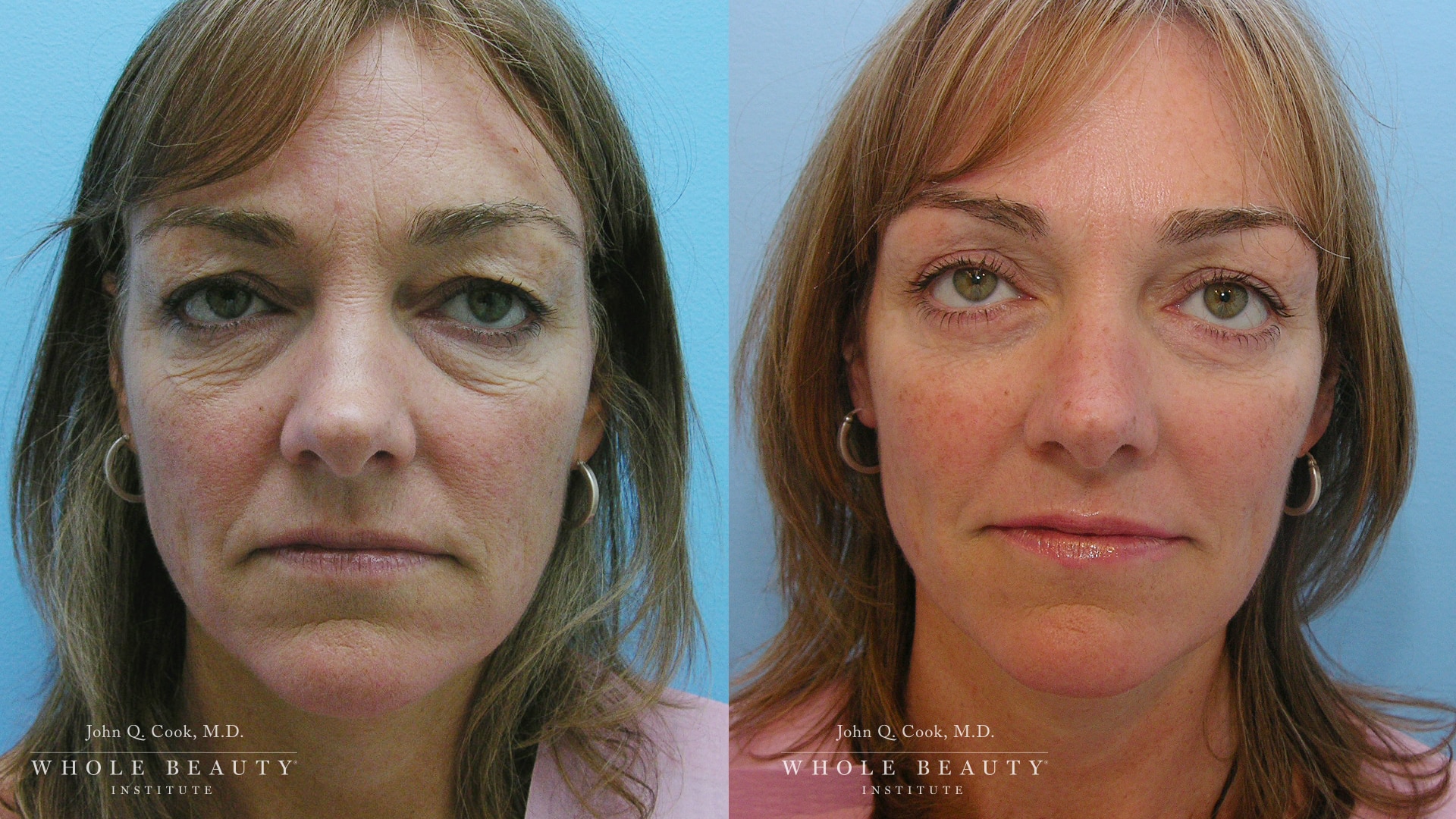
Upper Eyelid Surgery
Upper eyelid surgery, also know as upper blepharoplasty, addresses the appearance of tiredness that results from overhanging skin and protruding fat of the upper eyelid. In severe cases, the skin may overhang the lashes of the upper lid and affect vision. Under magnification, Dr. Cook identifies the natural eyelid crease and makes the incision along this line. Excess skin and muscle are precisely trimmed, while allowing for normal eyelid motion. Dr. Cook will also identify any forward protrusion of the upper eyelid fat that was noted during the consultation and judiciously contour this to provide a fresh appearance. It is critical to avoid over re-section of the fat, since this leads to an upper eyelid that is hollow and harsh. A precise closure along the line of the natural eyelid crease leads to a scar that is most cases is extremely difficult to detect after the normal post-blepharoplasty healing process is complete.
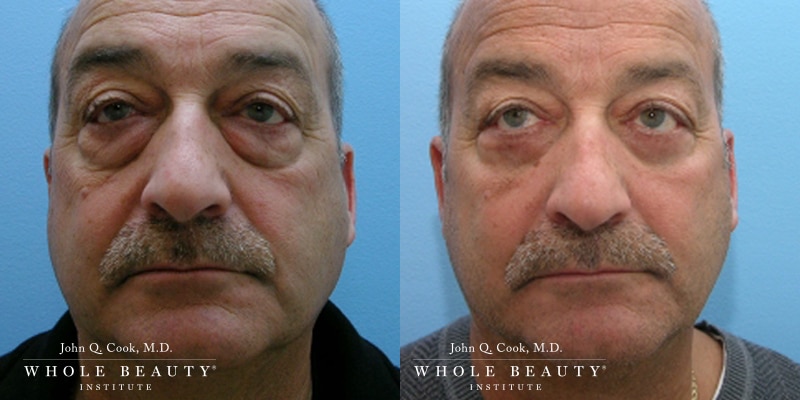
Lower Eyelid Surgery
Dr. Cook addresses four key issues in surgery of the lower eyelid (lower blepharoplasty). The relative importance of each of these issues will have been discussed in detail during your consultation.
Forward Bulging of Fat
Fullness or heaviness of the lower eyelid is related to a forward bulging of the natural pillows of fat on which the eye rests. The solution to this problem relates to a combination of judicious sculpting of the fat and a tightening of the supporting structures of the lower lid. In some patients, the fullness is made more apparent by the descent of the upper cheek that occurs with the aging process. If this is the case, Dr. Cook may carry out a limited upper cheek lift through the blepharoplasty incision.
Loss of Fullness
Sometimes, the upper cheek loses its fullness due to a decrease in the natural fat of the upper cheek, which may accompany the aging process or significant weight loss. In this case, the appearance of a heavy lower eyelid is increased due to a loss of the natural “camouflage” of the upper cheek fat. To correct this, Dr. Cook rebalances the volume of the upper cheek with the procedure known as autologous fat transfer. This involves the uniform harvesting of a small volume of fat from a zone of excess (essentially a miniature liposuction) and the transfer of the fat with specialized instruments to the natural fat compartments of the upper cheek.
Skin Tone
Skin tone is corrected most often through a fine incision hidden beneath the margins of the lower eyelashes. Under magnification, Dr. Cook releases the skin from the underlying orbicularis muscle (the squint muscle of the lower eyelid) in order to restore proper lid tone. The skin is trimmed after other steps of the blepharoplasty are carried out so that there will be a precise correction. In some cases of mild skin excess, chemical peel and laser techniques can be used to improve skin tone.
Muscle Tone
Muscle tone is related to the quality of the orbicularis muscle, which lies beneath the eyelid skin and is activated whenever we squint. With the aging process and certain patterns of animation, this muscle may lose its tone or develop bulges (sometimes referred to as festoons) that can be seen through the skin. Dr. Cook formulates a blepharoplasty treatment plan that relates to the particular circumstances of each patient. This will involve a combination of trimming excess bulging muscle and tightening the support of the muscle.
Lower eyelid support must be carefully assessed in each patient. If the aging process or previous surgery has led to diminished support of the lower eyelid, Dr. Cook will detect this during the physical exam of the eyelid as part of the blepharoplasty consultation. This will be corrected with a procedure known as a canthoplasty or canthopexy. A lower eyelid that lacks adequate support often has a sad, rounded-out appearance along the outer curve of the eyelid margin.
In more advanced cases, the lid will drift away from the eye itself, which can lead to a drying out of the natural layer of tears that protects the eye and its surrounding structures. Standard lower eyelid blepharoplasty procedures will cause an undesirable pulling down of the lid margin if diminished lid support is not detected during a physical exam.

If you would like to have a consultation regarding blepharoplasty in the Chicago area, or if you have questions for our team, please call 312-751-2112 or contact us online.
Request a consultBlepharoplasty Recovery
Your eyes will likely be lubricated with an ointment after your blepharoplasty procedure. You can expect some degree of swelling and bruising around the eyes for the first couple of weeks following a blepharoplasty, however, and discomfort can be alleviated with medication. In some cases, blepharoplasty patients have experienced sensitivity to light, excessive tearing, and blurred or blurred vision. These side effects are generally temporary and will dissipate as the eyelid region heals. You will likely be able to resume normal daily activities 10 days after your blepharoplasty.
What Complements a Blepharoplasty?
Dr. Cook carries out blepharoplasty based on a precise treatment plan that has been formulated during your consultation. If appropriate, blepharoplasty may be combined with a brow lift or surgery to the upper cheek. Dr. Cook will select the technique that is appropriate to reduce heaviness or fullness of the upper lids, puffiness or loss of tone of the lower lids, and signs of aging or stress that are present in the eyelid region. Dr. Cook will remove excessive skin, contour excess bulges of fat, and restore support to the eyelid in order to provide a naturalistic rejuvenation that preserves your natural identity.
In selected patients, relaxants such as BOTOX® and injectable fillers such as Restylane® and Juvederm® can further refine the blepharoplasty results. Dr. John Q. Cook is a boardcertified plastic surgeon with a deep interest and extensive experience in blepharoplasty. His depth of experience, careful attention to detail, and individualized approach to blepharoplasty form the foundation of his reputation in the field of eyelid rejuvenation.
10 Eyelid Surgery Facts You Should Know
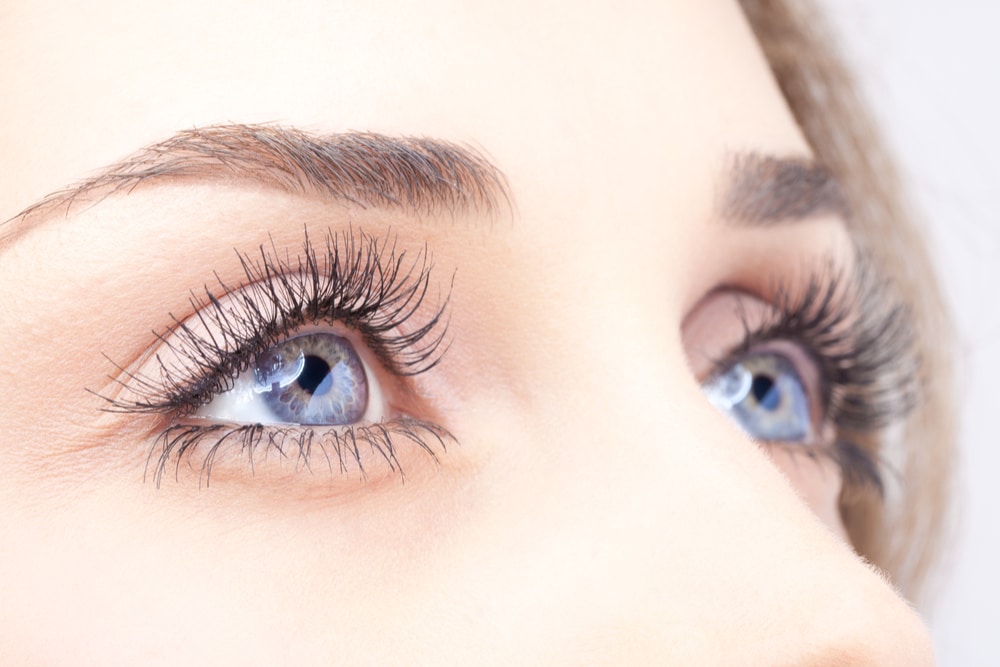
Eyes Ahead: Making Eyelid Lift Recovery a Success
We often take our eyes for granted. Without a second thought, we rely on them for our sense of sight and for conveying complex emotions. Our eyes can help us appear alert and well-rested, but they can also make us look aged or tired when they droop...
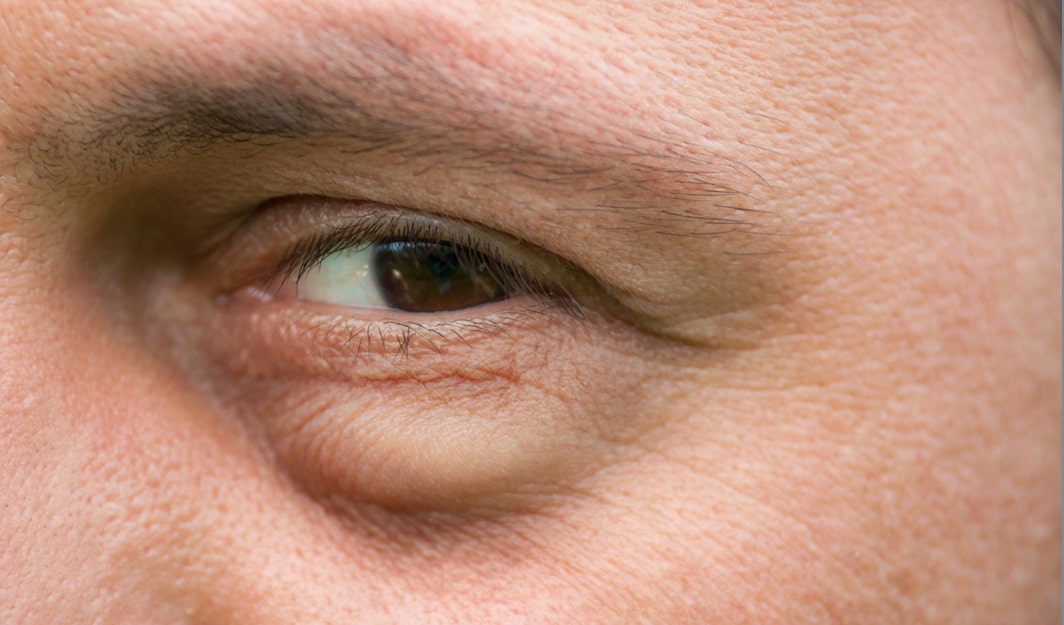
Key Elements of Lower Eyelid Surgery
There is no single operation that will work for all lower eyelids. This becomes readily apparent if we consider the anatomy of the lower eyelid and how it changes in different ways in different people with the aging process.
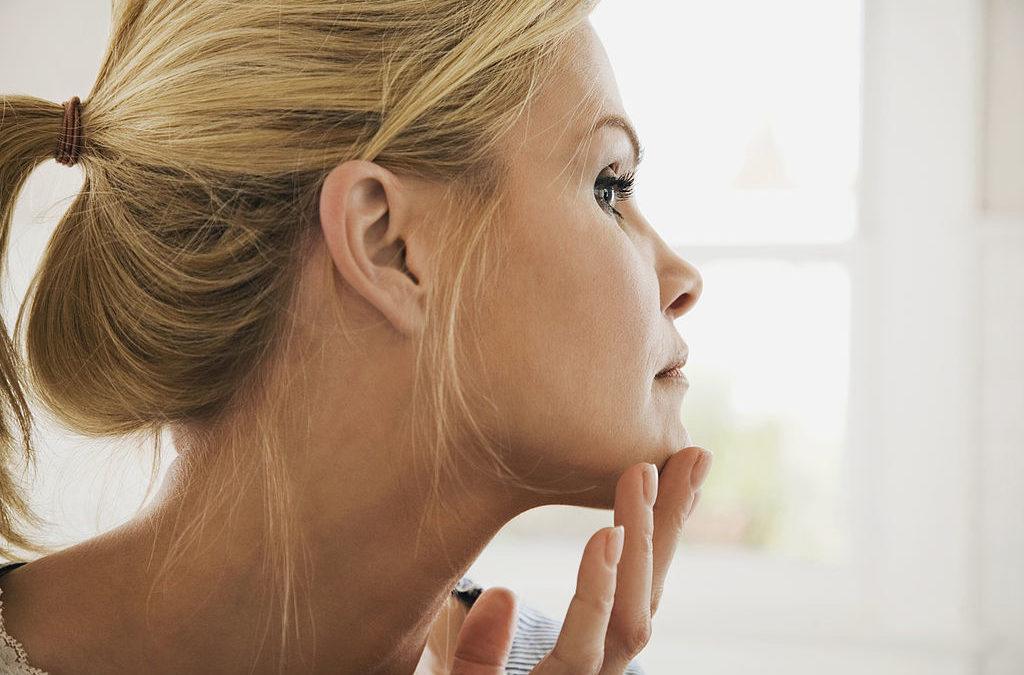
Upper Blepharoplasty and Brow Lift
Patients who come to me seeking rejuvenation of the brow and upper eyelids areas are pleased to learn that I can often accomplish this for them under local anesthesia in either my Winnetka or Chicago office. Patients can obtain the benefits of an upper blepharoplasty and brow lift and without needing a general anesthetic or even IV sedation.
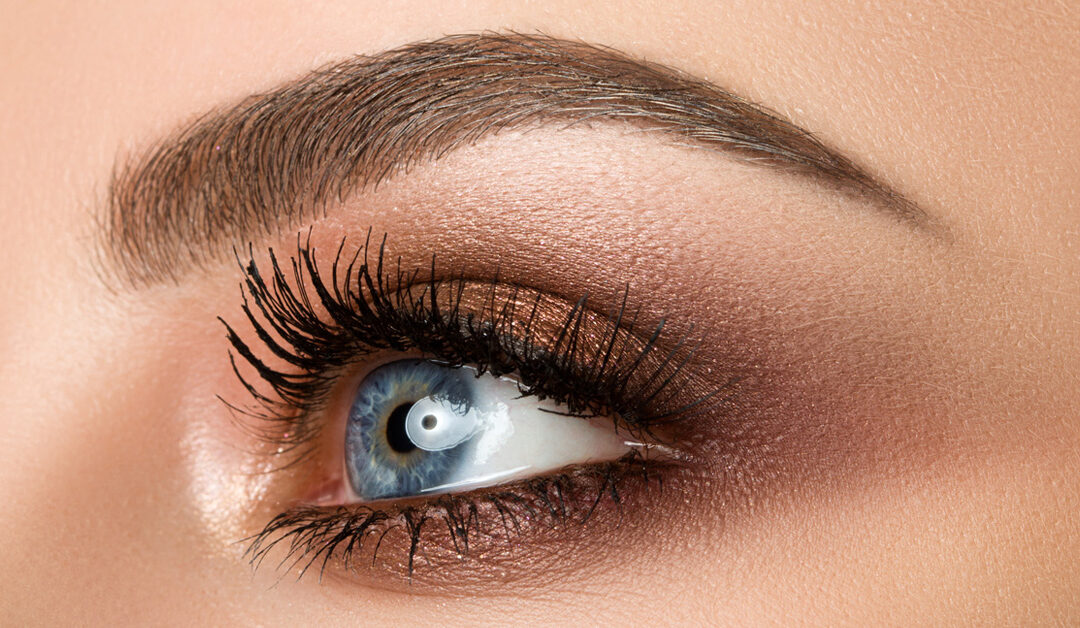
Upper Eyelid and Brow Lift
Heaviness in the upper eyelid area can be caused by true excess of upper eyelid skin and fat or by brow descent or a combination of the two. A careful evaluation will lead to the proper diagnosis and treatment with a brow lift or upper blepharoplasty or a combined procedure.
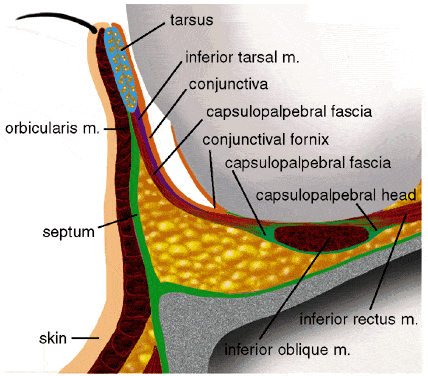
Lower Blepharoplasty
Our eyes are capable of expressing the nuanced complexities of human emotion. With subtle motions and shifts of eyelid tone we provide visual cues to those who interact with us. For some of us, changes associated with the aging process can rob...
Dr. Cook's Practice Blog
Explore our practice blog to learn more about non-surgical treatments and plastic surgery procedures available at The Whole Beauty® Institute. Get tips and advice, and discover new ways to improve your health and beauty.
Dr. Cook's HealthGems Blog
Dr. John Q. Cook shares his personal thoughts on well-being, quality of life, and more in HealthGems—from his decades of experience in the industry, studying and working with advanced technology and techniques.
Whole Beauty Skincare
SkinShopMD.com was created by Board-Certified plastic surgeon, Dr. John Q. Cook, as a trusted source for high quality, medical-grade skincare products to protect and rejuvenate your skin.
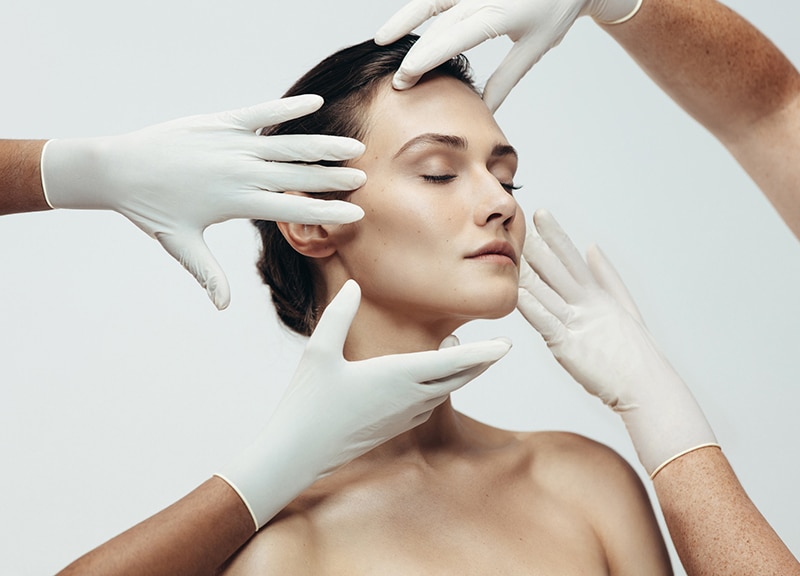
Educational Information
Get informed about cosmetic plastic surgery procedures and rejuvenating non-surgical treatments to help you make informed decisions about your desired treatment based on your aesthetic goals.
Testimonial and Practice Videos
Schedule a Consultation
Schedule a consultation with board-certified plastic surgeon, John Q. Cook, M.D., to learn more about plastic surgery solutions that may be right for you based on your aesthetic goals.
"*" indicates required fields
Our Office Locations
Our locations in the Gold Coast of Chicago and Winnetka in the North Shore reflect our commitment to convenient and discrete concierge-level service.
Chicago Office
737 North Michigan Ave., Suite 760 Chicago IL 60611 (312) 751-2112 Entrance at 151 E. Chicago Avenue
Winnetka Office
118 Green Bay Road Winnetka IL 60093 (847) 446-7562
Located directly across from Indian Hill Metra Station




